Recent Articles
Popular Makes
Body Types
2016 Nissan LEAF Road Test and Review
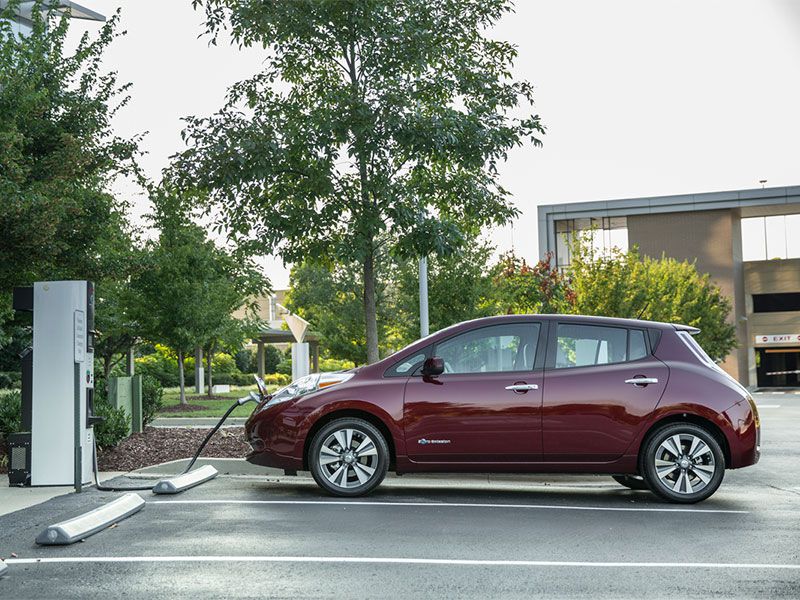
2016 nissan leaf exterior profile charging ・ Photo by Nissan
Yes, at this stage, an entry-level Tesla Model S has about twice the range of a 2016 Nissan LEAF SV. But guess what? The Model S also happens to be about twice the price of Nissan’s electric vehicle—even though it’s actually less efficient; that is, the Tesla may travel more miles per charge than the LEAF, but the LEAF uses up less electricity per mile. Nor is the LEAF limited to short trips. Indeed, its new battery pack has pushed its all-electric driving range into triple-digit territory for the first time. Other upgrades for the 2016 model year then deliver enhanced infotainment functionality for the Nissan, along with three more premium look exterior colors. It all adds up to a compact EV with a compact price and some big-time advantages for today’s customers. In this 2016 Nissan LEAF Road Test and Review, we'll see exactly how that works.
Pricing
The 2016 Nissan LEAF SV represents the mid-level entry for the lineup, as well as the least-expensive model with the new battery pack, and the car’s MSRP is $34,200. Needless to say, that’s a bit more than for a typical compact hatch. Right off the bat, the federal government furnishes up to $7,500 in tax credits, lowering the vehicle’s net price to $26,700. Thousands of dollars in incentives also are available from many state and local authorities. Then, beyond lowering the LEAF’s cost, there’s its high level of standard equipment, which adds more value to that pricing. The LEAF SV comes complete with navigation, advanced infotainment, heated front seats, a heated steering wheel, upsized wheels, heated outside mirrors and quick-charge capability.
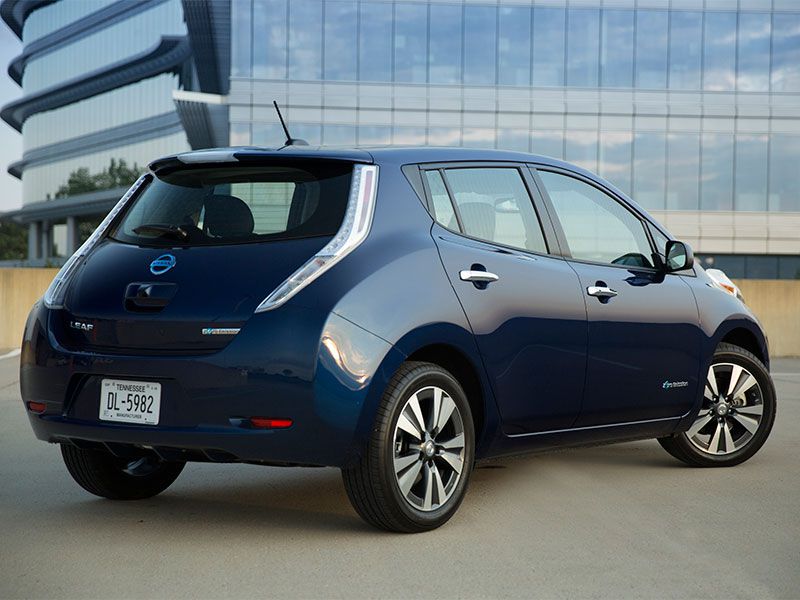
Photo by Nissan
Power, Performance and Fuel Efficiency
Of course, the power, performance, and fuel efficiency are the most important parts of our 2016 Nissan LEAF SV review, as they show the vehicle’s chief advantage: It uses no gasoline at all, and with the new 30-kWh battery, the LEAF SV is rated by the EPA as capable of 107 miles of all-electric driving range. Additionally, that travel comes with efficiency ratings of 124 MPGe city/101 MPGe highway/112 MPG combined. The Tesla mentioned above only hits 88/90/89.
The LEAF SV also benefits from a standard “quick charge port” and a 6.6-kW onboard charger. That way, owners can completely recharge the vehicle in about 6 hours using a 240-volt source or, at a typical public charging station, achieve an 80 percent charge in approximately 30 minutes.
The LEAF can be pretty peppy, too, with what Nissan calls “a driving feel similar to a conventional V6.”
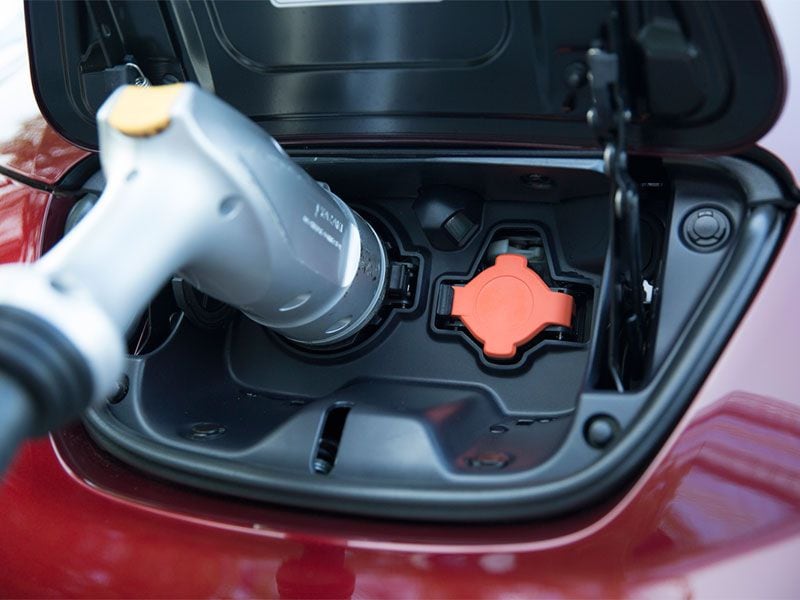
Exterior Design and Lighting
The aerodynamically optimized exterior of the 2016 Nissan LEAF SV has a streamlined and surprisingly curvy shape with a particularly prominent shoulder line, a sharply sloped front-end and highly detailed lighting treatments. Up front, halogen headlights are mounted high up on the hood beneath dramatic, bubble-like lenses, while at the back, thin, vertically oriented LED taillights frame the car’s hatch. The SV adds heated, body-color exterior mirrors, too. The overall look is certainly distinctive, even compared to the growing number of new compact hatches with traditional gas engines.
The LEAF is a bit bigger than those cars, however, with a length of 175 inches. That’s about 3 inches longer than a Honda Civic hatch and about 4.5 longer than the hatchback Toyota Corolla iM.
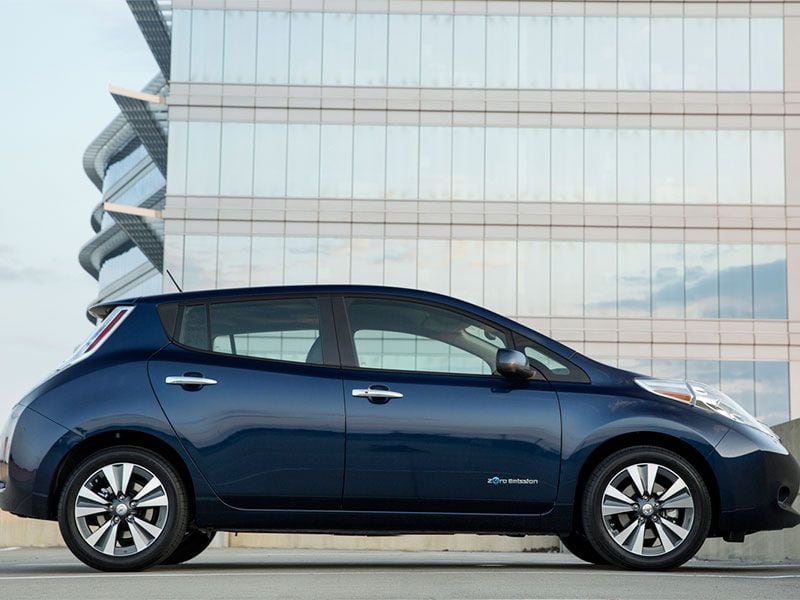
Photo by Nissan
Interior Design and Capacities
The cabin of the 2016 Nissan LEAF SV is clean, modern and highlighted by digital instrumentation that’s split into a lower half circle for powertrain info and a slim upper readout for the speedometer, eco-performance monitor, clock and exterior temperature. The center stack is then set on a discrete, elevated panel, separated from the rest of the dashboard, which gives very contemporary effect. The LEAF’s gear shifter also has been transformed into a unique, bell-shaped style cue for the cabin—which has more front headroom than conventional compact hatchbacks.
The rest of the car’s dimensions also exceed those from some mainstream rivals. Thus, the LEAF also has more rear headroom than a Toyota Corolla or Subaru Impreza, more rear legroom than a Ford Focus, and more cargo space behind the rear seats than a Chevy Cruze hatchback.
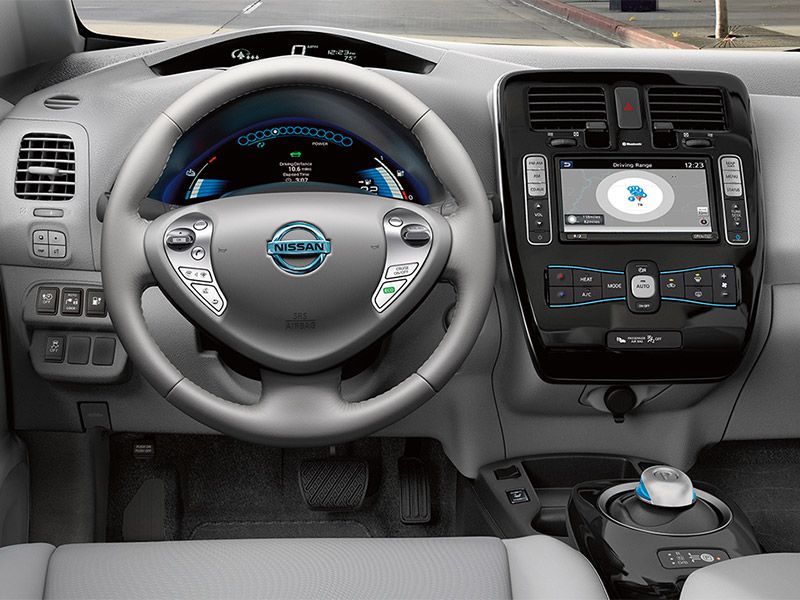
Infotainment and Audio
Like many EVs, the 2016 Nissan LEAF SV combines a high-tech powertrain with high levels of technology elsewhere. For example, the standard infotainment setup for the LEAF SV includes a 7-inch touchscreen display, navigation and the NissanConnect with Mobile Apps suite, which provides access to a variety of smartphone-style mobile apps. A 6-speaker audio system also is standard, as are EV-specific infotainment features like a continuously updated view of nearby charging stations and an “Eco route” navigation function that picks routes based on expected energy usage.
The SV trim further brings standard NissanConnect EV telematics. With this, owners can rely on their compatible smartphones to remotely control certain LEAF functions, allowing them to pre-warm the cabin, for instance, on colder days.
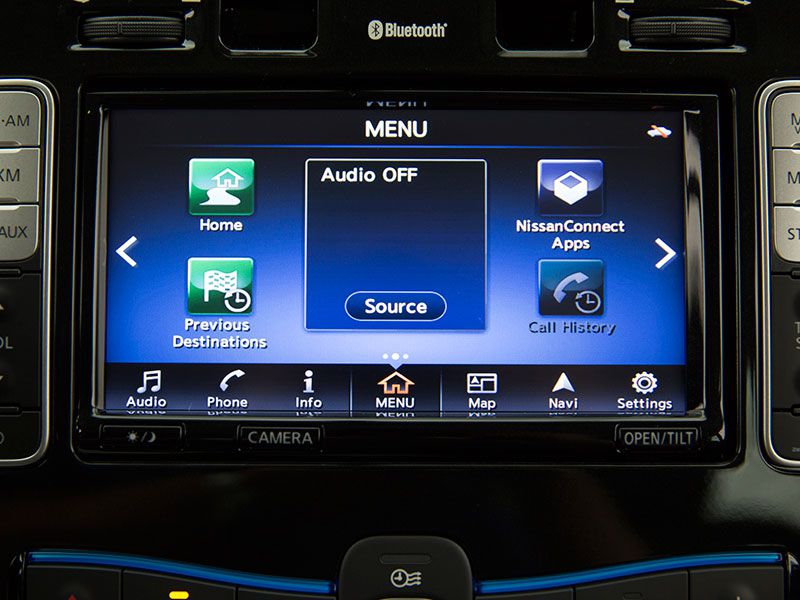
Safety Technology and Ratings
The 2016 Nissan LEAF SV comes with a standard rearview camera system and all of the basics found on nearly all new cars today, including stability control, traction control, anti-lock brakes, a tire pressure monitor and an assortment of airbags. From a structural standpoint, the car leverages dedicated pipe-style side-door guard beams for protection, plus engineered construction that helps manage crash forces in the front and rear crumple zones.
On the other hand, the LEAF is not a Top Safety Pick of the IIHS, and it has a 4-Star Overall Safety Score from NHTSA, with 4 stars in all facets of testing.
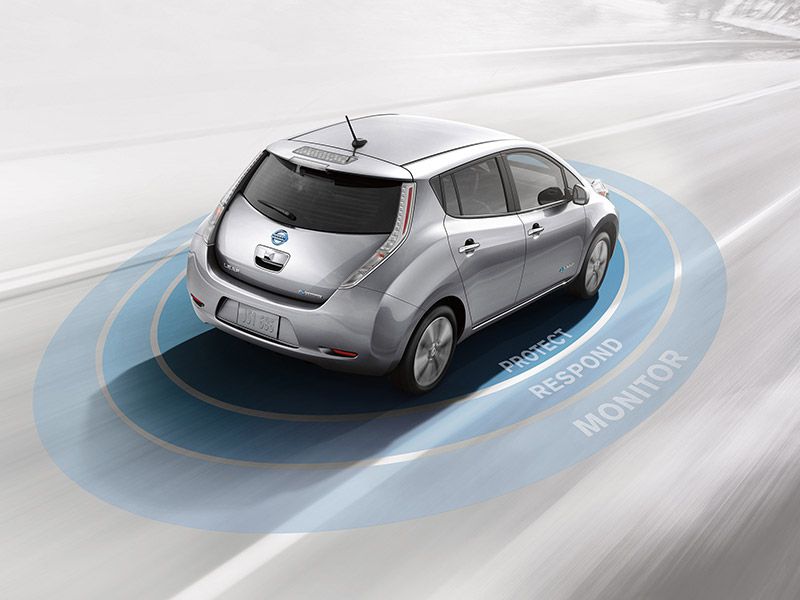
Available Equipment
Premium audio wasn’t covered in the audio section of our 2016 Nissan LEAF SV review, but there is an up-level system available as part of the Premium Package. Priced from $1,570, the package pairs a 7-speaker Bose sound system—from that company’s Energy Efficient Series—with Nissan’s 360-degree Around View Monitor.
Moreover, folks can move up to the LEAF SL for extra luxuries. Among them: an enhanced rear spoiler that integrates a photovoltaic solar panel, which in turn can use sun power to support the car’s 12-volt accessories battery. The SL grade also gets brightened up with automatic headlights, LED low-beams, and front foglights, while its cabin boasts leather-appointed seating and heat for the rear positions. The MSRP for the LEAF SL is $36,790 (before the $7,500 federal tax credit and any other incentives).
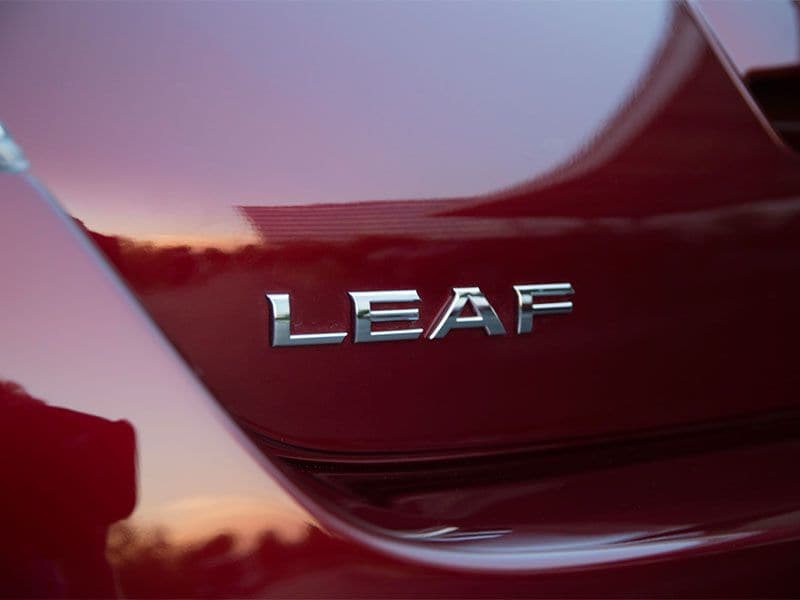
Other Cool Info
One of the key selling points of the 2016 Nissan LEAF SV is that not only do owners avoid having to pay for gasoline, but many also charge for free as well. In fact, Nissan’s “No Charge to Charge” program had extended to 50 markets across the country by September of this year. As a result, Nissan indicates that almost 90 percent of U.S. LEAF owners live in locations where the program is in effect.
In those areas, new LEAF owners and lessees get 24 months worth of no-cost charging at participating public stations, and they also can get the LEAF EZ-Charge app to quickly find any of the almost 1,000 charging stations already available in the program. According to Nissan, that can save as much as $1,000 during the 2-year coverage period.
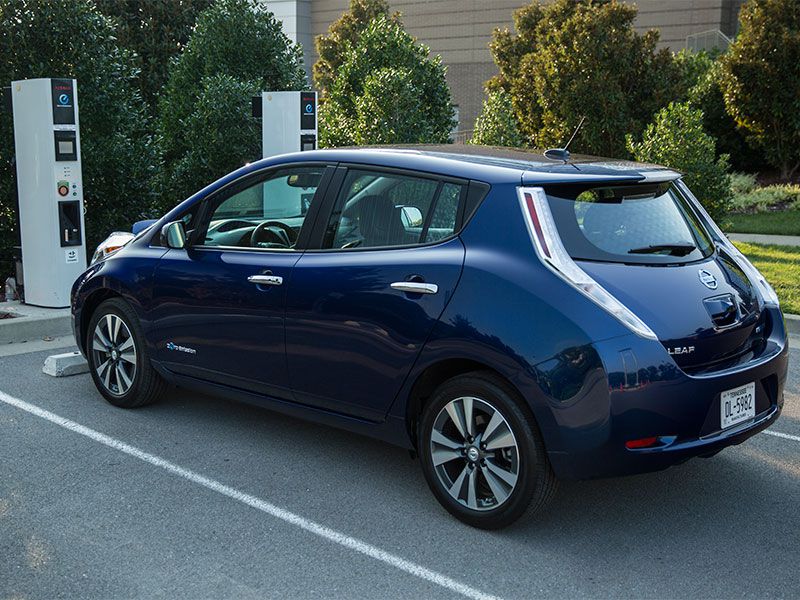
Final Thoughts
Owners looking for an easy way to join the EV revolution will find exactly that in the 2016 Nissan LEAF SV. The car has enough real-world driving range for many urban owners, and many neighborhoods are supporting Nissan’s wallet-friendly No Charge to Charge program. The LEAF also remains relatively affordable, especially compared to the electric vehicles with longer ranges. Even the upcoming Chevy Bolt will see a major price premium as compared to the LEAF, as the least-expensive Chevrolet EV will cost almost $8,500 more than the entry-level Nissan. It’s also worth noting that Nissan bolsters driver confidence with an 8t-year/100,000-mile limited battery warranty for the car. All of which has helped the LEAF continue its position as the world’s best-selling electric vehicle.
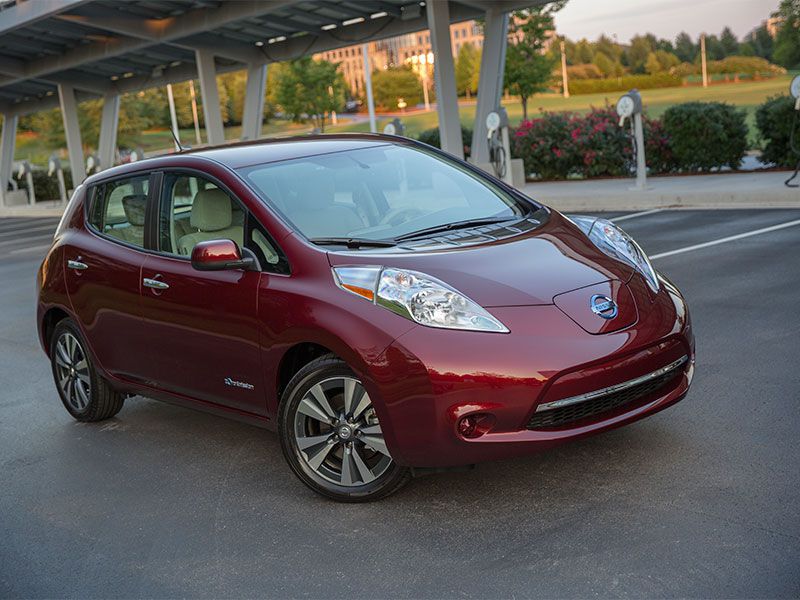
Photo by Nissan